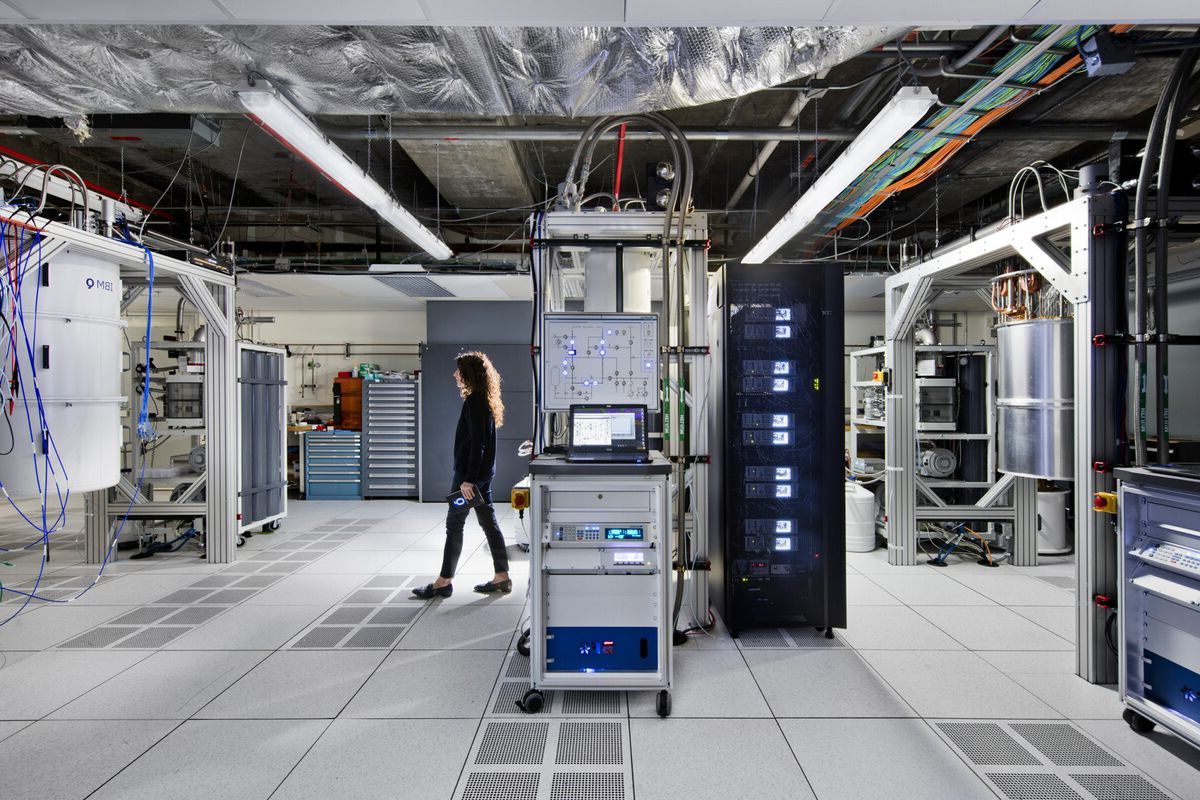
Artificial Intelligence (AI) hardware is the backbone of modern technology, driving advancements in everything from smartphones to self-driving cars. But what exactly makes AI hardware so special? AI hardware includes specialized processors, like GPUs and TPUs, designed to handle complex computations at lightning speed. These components are crucial for training and running AI models efficiently. Understanding the ins and outs of AI hardware can seem daunting, but it's essential for grasping how our tech-driven world operates. In this post, we’ll break down 18 fascinating facts about AI hardware that will help you appreciate the technology powering our future.
AI Hardware: The Backbone of Modern Technology
Artificial Intelligence (AI) has revolutionized how we interact with technology. Behind the scenes, specialized hardware powers these intelligent systems. Here are some fascinating facts about AI hardware that highlight its importance and capabilities.
The Evolution of AI Hardware
AI hardware has come a long way from its early days. Let's explore some key milestones in its development.
- Early AI Systems: Early AI systems relied on traditional CPUs, which were not optimized for the parallel processing required by AI algorithms.
- Introduction of GPUs: Graphics Processing Units (GPUs) became popular for AI tasks due to their ability to handle multiple operations simultaneously.
- ASICs and FPGAs: Application-Specific Integrated Circuits (ASICs) and Field-Programmable Gate Arrays (FPGAs) offer customized solutions for specific AI applications, providing higher efficiency.
- Neuromorphic Computing: Inspired by the human brain, neuromorphic computing aims to create hardware that mimics neural networks, enhancing AI's processing capabilities.
Key Components of AI Hardware
Understanding the components that make up AI hardware helps appreciate its complexity and power.
- Processing Units: Central Processing Units (CPUs), GPUs, and Tensor Processing Units (TPUs) are the primary processing units used in AI hardware.
- Memory: High-speed memory, such as DRAM and SRAM, is crucial for storing and accessing large datasets quickly.
- Interconnects: High-bandwidth interconnects, like NVLink and PCIe, enable fast data transfer between different hardware components.
- Cooling Systems: Advanced cooling systems are necessary to manage the heat generated by powerful AI hardware during intensive computations.
AI Hardware in Everyday Applications
AI hardware is not just for research labs; it plays a significant role in our daily lives.
- Smartphones: Modern smartphones use AI hardware for features like facial recognition, voice assistants, and camera enhancements.
- Autonomous Vehicles: Self-driving cars rely on AI hardware to process data from sensors and make real-time driving decisions.
- Healthcare: AI hardware powers medical imaging devices, enabling faster and more accurate diagnoses.
- Smart Home Devices: AI hardware in smart home devices, like thermostats and security cameras, helps automate and enhance home management.
Challenges and Future Trends
Despite its advancements, AI hardware faces several challenges and is continuously evolving.
- Power Consumption: High power consumption remains a significant challenge for AI hardware, especially in data centers.
- Scalability: Scaling AI hardware to handle increasingly complex tasks requires innovative solutions and new architectures.
- Quantum Computing: Quantum computing holds the potential to revolutionize AI hardware by offering unprecedented processing power.
- Edge Computing: Edge computing aims to bring AI processing closer to the data source, reducing latency and improving efficiency.
The Impact of AI Hardware on Society
AI hardware has far-reaching implications for various sectors and society as a whole.
- Economic Growth: AI hardware drives economic growth by enabling new technologies and industries.
- Job Creation: While some fear job displacement, AI hardware also creates new job opportunities in fields like AI development, hardware engineering, and data analysis.
AI hardware continues to evolve, pushing the boundaries of what is possible with artificial intelligence. Understanding its intricacies helps appreciate the technology that powers our modern world.
The Future of AI Hardware
AI hardware is changing fast. From neural networks to quantum computing, the tech world is buzzing. GPUs and TPUs are making AI tasks quicker and more efficient. Edge computing is bringing AI closer to users, reducing delays. Neuromorphic chips are mimicking the human brain, promising smarter machines.
Quantum computers could solve problems that are impossible today. AI accelerators are boosting performance in everything from smartphones to supercomputers. Energy efficiency is a big focus, with new designs cutting power use.
AI hardware isn't just about speed; it's about making AI more accessible and useful. As these technologies evolve, expect even more impressive advancements. The future of AI hardware looks bright, and it's set to transform how we live and work. Stay tuned, because this is just the beginning.
Was this page helpful?
Our commitment to delivering trustworthy and engaging content is at the heart of what we do. Each fact on our site is contributed by real users like you, bringing a wealth of diverse insights and information. To ensure the highest standards of accuracy and reliability, our dedicated editors meticulously review each submission. This process guarantees that the facts we share are not only fascinating but also credible. Trust in our commitment to quality and authenticity as you explore and learn with us.


